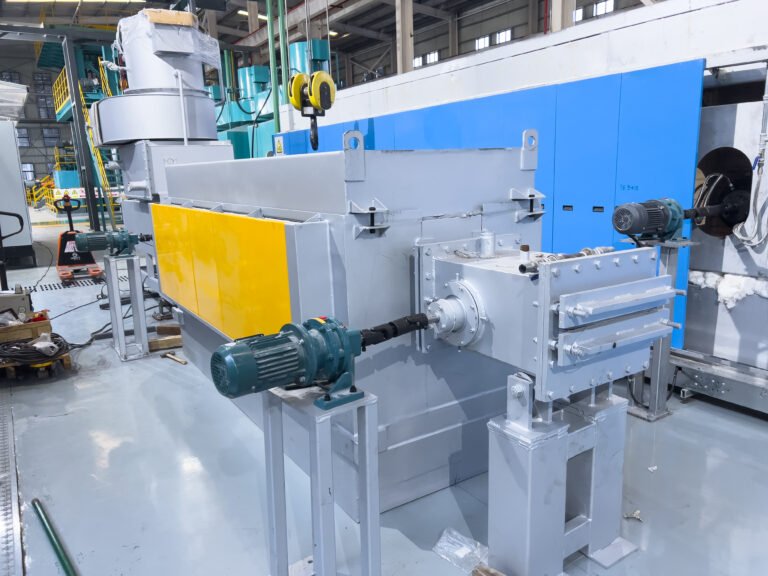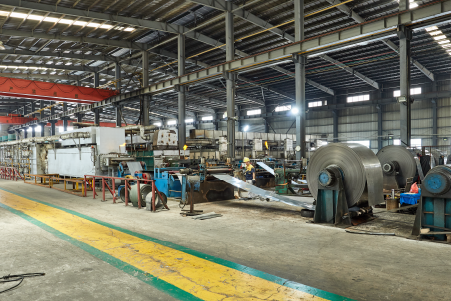
Вы боретесь с непостоянным качеством термообработанных металлических изделий? Такие дефекты, как окисление и искажение поверхности, могут привести к большому количеству брака и нанести ущерб вашей репутации. Решение проблемы заключается в освоении процесса отжига и понимании основных причин этих дорогостоящих дефектов.
К наиболее распространенным дефектам процесса отжига относятся окисление поверхности, обезуглероживание, растрескивание, искажение (коробление), неравномерный рост зерна и неравномерная твердость. Эти проблемы обычно возникают из-за неправильного температурного контроля, неправильной атмосферы печи или неподходящих скоростей нагрева и охлаждения, которые ухудшают конечные механические свойства и внешний вид материала.
В течение многих лет я работал с переработчиками металла, которые были на грани потери крупных контрактов из-за проблем с контролем качества. Они были расстроены, видя, как идеально хороший материал становится бесполезным из-за дефектов, появившихся на этапе отжига. Эта задача может показаться непосильной, но я уверяю вас, что она решаема. Понимание причин каждого дефекта - первый шаг к безупречному производству.
В компании AKS Furnace мы верим, что знания - это самый мощный инструмент в производстве. Просто купить новую печь - это не волшебная пуля; понимание сложного танца между температурой, временем и атмосферой - вот что действительно повышает качество. Эта статья - не просто список проблем, это глубокое погружение в металлургическую науку, стоящую за ними. Мы изучим тонкие, но критически важные факторы, которые отличают высококачественный продукт от брака, опираясь на десятилетия практического опыта и данные из реальных приложений. Мы рассмотрим, как точные системы управления и инновационные конструкции печей, такие как наша технология рекуперации отработанного тепла1Мы напрямую решаем эти фундаментальные проблемы, превращая потенциальные дефекты в предсказуемое совершенство. Давайте вместе начнем создавать этот опыт.
Какие дефекты часто встречаются в процессе отжига?
Приходилось ли вам доставать из печи партию металлических деталей и обнаруживать, что они окислены, деформированы или потрескались? Это разочаровывающее открытие нарушает производственный график и съедает вашу прибыль. Выявление этих распространенных дефектов - важнейший первый шаг к их устранению из вашего технологического процесса.
Распространенные дефекты в процессе отжига в целом делятся на поверхностные (окисление, обезуглероживание, окалина), размерные (искажение, коробление, растрескивание) и металлургические (неравномерный размер зерна, несоответствующая твердость). Каждый из них указывает на определенные несоответствия в циклах нагрева, выдержки или охлаждения при обработке.
Распознать дефект - это одно, а понять его последствия - совсем другое. Для многих наших клиентов эти проблемы не просто косметические. Я вспоминаю компанию "PrecisionCo" из Юго-Восточной Азии, занимавшуюся обработкой полосы из нержавеющей стали и пытавшуюся выйти на европейский автомобильный рынок. Их главным препятствием был высокий процент брака из-за двух основных проблем: тусклой, непостоянной поверхности и едва заметной волнистости по краям рулонов. Это были не просто незначительные дефекты - они стали причиной отказа для их клиентов, которым требовался безупречный материал для видимых элементов отделки. Этот опыт показывает, что дефекты - это не просто производственные недостатки, это серьезные проблемы для бизнеса. Они влияют на все: от стоимости материалов и эффективности труда до удовлетворенности клиентов и доступа на рынок. Прежде чем приступить к поиску решения, необходимо тщательно изучить потенциальные проблемы, которые могут возникнуть в ходе этого важнейшего процесса термообработки. Каждый дефект рассказывает свою историю о том, что в печи пошло не так, и научиться читать эти признаки - первостепенная задача.
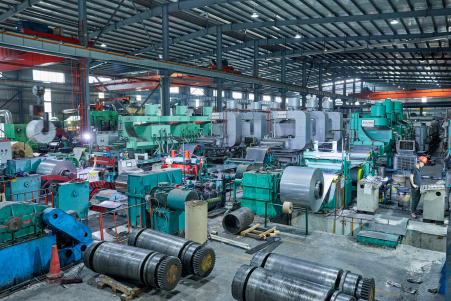
Когда мы анализируем дефекты отжига, полезно разделить их на три основные категории: те, что влияют на поверхность, те, что изменяют физические размеры компонента, и те, что изменяют его внутреннюю металлургическую структуру. Каждая категория возникает из-за различных нарушений контроля в цикле отжига и имеет уникальные последствия для характеристик и стоимости конечного продукта. Всестороннее понимание этих типов дефектов является основой, на которой строятся надежные и воспроизводимые процессы термообработки. Оно позволяет операторам и инженерам быстрее диагностировать проблемы и внедрять целенаправленные, эффективные решения, а не полагаться на догадки, которые часто оказываются дорогостоящими и отнимают много времени. По моему опыту, систематический подход к анализу дефектов - это то, что отличает ведущих производителей от остальных.
Дефекты, связанные с поверхностью: Нежелательная отделка
Поверхностные дефекты часто являются наиболее очевидными, поскольку они непосредственно влияют на внешний вид детали и ее пригодность для последующих процессов, таких как нанесение покрытий, гальванизация или сварка. Наиболее распространенными среди них являются окисление и обезуглероживание. Окисление происходит, когда металл реагирует с кислородом или влагой в атмосфере печи при повышенных температурах, образуя слой окалины или обесцвечивания. Это особенно проблематично для таких материалов, как нержавеющая сталь, где яркая и чистая поверхность является ключевым атрибутом качества. Например, клиент, производящий элитную кухонную утварь, обнаружил, что даже незначительное окисление на прессованных изделиях из нержавеющей стали 304 требует агрессивной и дорогостоящей вторичной полировки, что увеличивает производственные затраты почти на 15%.
С другой стороны, обезуглероживание - это потеря углерода с поверхности стальных сплавов. Это происходит, когда углерод в стали вступает в реакцию с окислительной атмосферой, образуя на поверхности мягкий слой с низким содержанием углерода. Этот дефект особенно вреден для деталей, требующих высокой твердости поверхности и износостойкости. Производитель режущих инструментов, с которым мы работали, обнаружил, что обезуглероживание при отжиге резко снижает стойкость кромок его продукции. Анализ первопричины указал на неправильный состав защитной атмосферы - в частности, на соотношение водорода и азота, которое не было оптимизировано для конкретной марки высокоуглеродистой стали.
Такие проблемы с поверхностью почти всегда связаны с нарушением контроля атмосферы. В плохо герметизированной печи или печи с неправильным управлением подачей защитного газа реактивные газы, такие как кислород и углекислый газ, неизбежно повредят поверхность материала. Данные металлургических исследований постоянно показывают, что для предотвращения окисления при отжиге нержавеющей стали точка росы в атмосфере печи должна быть ниже -40 °C. Для этого требуется не только подача газа высокой чистоты (обычно водорода или азотно-водородной смеси), но и печь, такая как наша Печь для отжигаБлагодаря превосходной газонепроницаемости и точным системам управления атмосферой.
Габаритные и структурные дефекты: Когда форма не работает
Неточности в размерах, такие как искажения, коробление и трещины, являются одними из самых серьезных дефектов отжига, часто приводящих деталь в полную негодность. Эти проблемы вызваны неконтролируемыми термическими напряжениями, возникающими в материале при нагреве или охлаждении. Когда деталь нагревается или охлаждается неравномерно, различные участки расширяются или сжимаются с разной скоростью. Эта разница создает внутренние напряжения, которые, если они превышают предел упругости материала при данной температуре, приводят к необратимой пластической деформации (короблению или искажению). Если напряжения достаточно сильны, особенно в хрупких материалах или при быстром охлаждении, они могут привести к растрескиванию.
Геометрия детали играет важную роль. Компоненты сложной формы, с острыми углами или значительными изменениями толщины поперечного сечения гораздо больше подвержены деформации. Например, клиент, производящий крупные тонкостенные компоненты автомобильных выхлопных систем из ферритной нержавеющей стали, столкнулся с проблемой значительного коробления в своей старой печи периодического действия. Лучистый нагрев был неравномерным, а цикл охлаждения - слишком агрессивным, что приводило к деформации больших и более плоских секций. Переход на непрерывную Печь с сетчатой лентой AKS, которая обеспечивает равномерный конвективный нагрев и многозональную систему охлаждения, удалось снизить количество брака, связанного с деформацией, более чем на 90%.
Для предотвращения этих дефектов требуется тщательный контроль над всем термическим циклом. Это включает в себя использование более медленных и равномерных скоростей нагрева, обеспечение равномерного распределения температуры по всей камере печи и, что наиболее важно, разработку контролируемой последовательности охлаждения. Для многих сплавов, особенно с низкой теплопроводностью, таких как нержавеющая сталь, необходимо тщательно контролировать скорость охлаждения. В конструкции наших печей используются передовые системы охлаждения с точным управлением воздушным потоком, что позволяет создавать индивидуальные профили охлаждения, которые равномерно отводят тепло, минимизируют остаточные напряжения и гарантируют оптимальную плоскостность и стабильность размеров, что является ключевой особенностью нашей продукции. Усовершенствованная система охлаждения.
Металлургические несоответствия: Скрытые недостатки
Возможно, самыми коварными дефектами являются те, которые не видны невооруженным глазом, но оказывают глубокое влияние на механические свойства материала. Это металлургические несоответствия, в первую очередь неравномерный размер зерна и вариации твердости по всей детали. Основной целью отжига часто является получение однородной, тонкой зернистой структуры и определенной целевой твердости. Если процесс не контролируется должным образом, получаемая микроструктура может быть неоднородной, что приводит к непредсказуемым характеристикам при последующих операциях формовки или при окончательном применении.
Неравномерный рост зерна обычно является результатом неравномерного распределения температуры или "горячих точек" в печи. Если одна часть компонента находится при значительно более высокой температуре, чем другая, она будет расти быстрее, что приведет к образованию крупнозернистой структуры в этой области. Это может привести к состоянию, известному как "апельсиновая корка" на поверхности во время операций формовки, и может снизить общую пластичность и усталостную прочность материала. Мы столкнулись с подобной ситуацией у производителя латунных полос, чья продукция не проходила контроль качества из-за несоответствующей прочности на разрыв. Инфракрасная термография существующей печи выявила колебания температуры до ±30°C по всей ширине полосы, что напрямую коррелировало с участками несоответствующего размера зерна.
В следующей таблице приведено типичное сравнение правильно и неправильно отожженных образцов стали с указанием влияния на основные металлургические свойства.
| Недвижимость | Правильно отожженный образец (печь AKS) | Неправильно отожженный образец (обычная печь) | Влияние на производительность |
|---|---|---|---|
| Твердость (HRB) | 75 ± 2 | 88 ± 10 | Нестабильная формуемость, износ инструмента |
| Размер зерна (ASTM E112) | 8 - 9 (униформа) | 5 - 9 (смешанный) | Плохая обработка поверхности ("апельсиновая корка"), снижение пластичности |
| Прочность на разрыв (МПа) | 520 | 590 | Хрупкое поведение, непредсказуемое растяжение |
| Шероховатость поверхности (Ra) | < 0,1 мкм (яркий) | > 0,5 мкм (тусклый, окисленный) | Плохой внешний вид, требуется вторичная полировка |
Достижение металлургической однородности - это свидетельство точности печи. Для этого требуется конструкция, гарантирующая исключительную равномерность температуры - часто с точностью до ±5°C или выше - по всему рабочему объему. Это достигается за счет стратегического размещения нагревательных элементов, мощных циркуляционных вентиляторов в конвекционных печах и алгоритмов многозонного ПИД-регулирования. Наши Печи для отжига типа BellНапример, благодаря использованию мощных внутренних вентиляторов и сложной системы перегородок каждая часть катушки, от внешней обмотки до сердцевины, имеет абсолютно одинаковый тепловой профиль, гарантирующий постоянную твердость и структуру зерна.
Окисление - это дефект поверхностиПравда
Окисление происходит, когда металл вступает в реакцию с кислородом или влагой в атмосфере печи, образуя накипь или обесцвечивание на поверхности.
Деформация влияет только на внешний видЛожь
Коробление - это размерный дефект, который может привести детали в полную негодность, а не только повлиять на их внешний вид.
Каковы основные причины каждого из этих дефектов отжига?
Вы выявили дефекты, но знаете ли вы, что их вызывает? Простое лечение симптомов без диагностики первопричины - это рецепт повторяющихся неудач. Понимание причин окисления, коробления и неравномерной твердости очень важно для создания действительно надежного процесса отжига.
Основные причины дефектов отжига кроются в трех областях: неправильный контроль атмосферы, приводящий к окислению и обезуглероживанию; неправильное термическое профилирование, вызывающее деформацию и растрескивание; неравномерность температуры, которая приводит к несовпадению металлургических свойств, таких как твердость и размер зерна.
Выявление точной причины дефекта отжига может напоминать детективную работу. В чем проблема - в самой печи, параметрах процесса или даже в сырье? Я работал с клиентом, крупным производителем полос из углеродистой стали, который страдал от постоянного обезуглероживания. Сначала они винили поставщика защитного газа, полагая, что азотно-водородная смесь загрязнена. Однако после установки наших диагностических датчиков мы обнаружили истинного виновника: крошечные, почти незаметные утечки воздуха в изношенных дверных уплотнениях печи. При температуре отжига даже небольшого количества кислорода достаточно, чтобы удалить углерод с поверхности стали. Этот опыт послужил мощным уроком: причина часто кроется в сочетании факторов, и систематическое расследование имеет решающее значение. Дело не только в том, что вы помещаете в печь, но и в целостности самого сосуда. В этой статье мы рассмотрим эти основные причины, выйдя за рамки простых определений и изучив сложную взаимосвязь между оборудованием, параметрами и материаловедением, которые определяют результат каждого цикла отжига.
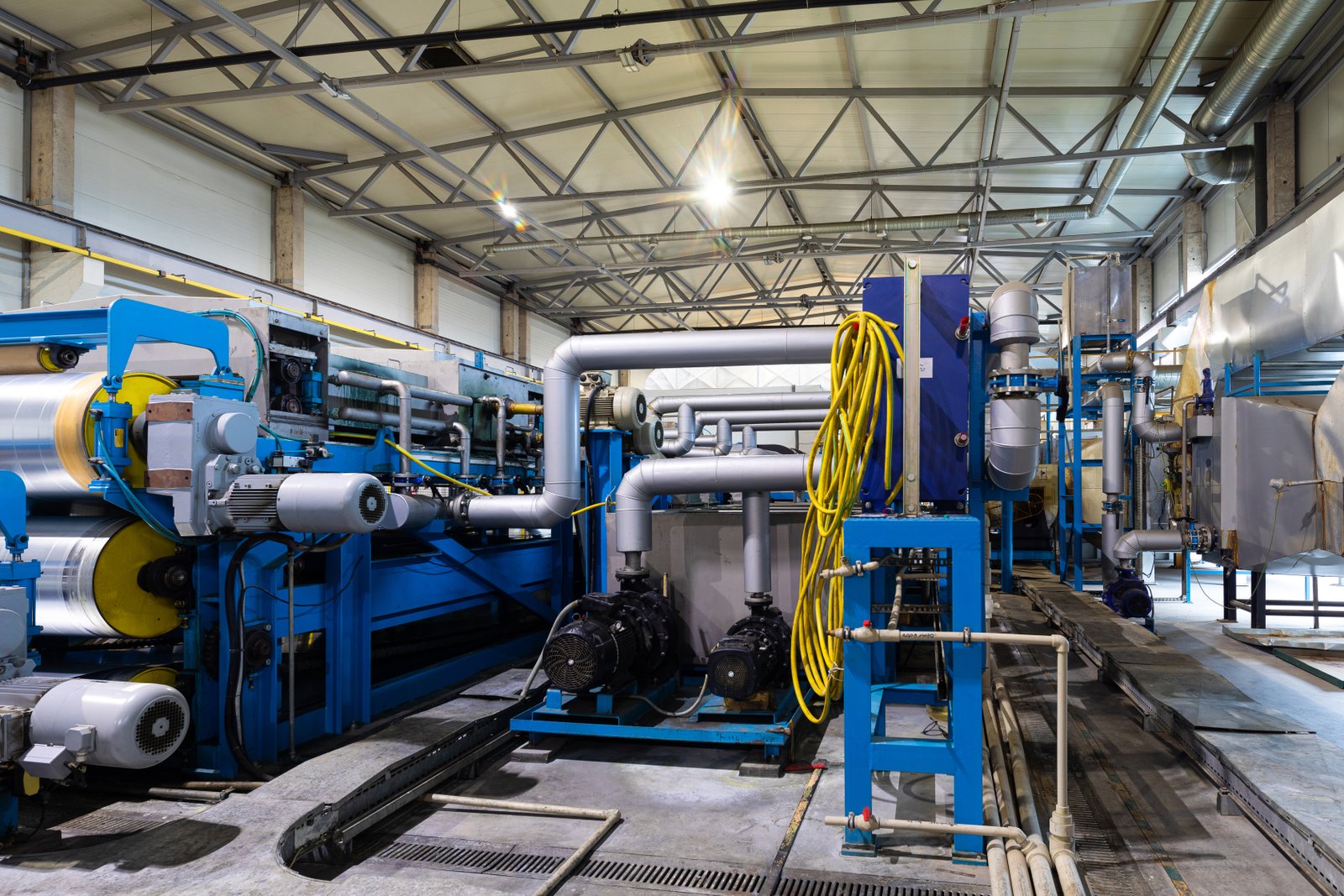
Чтобы эффективно устранить дефекты, необходимо лечить причину, а не симптом. Коренные причины неудач при отжиге можно систематически проследить до основных составляющих процесса термообработки: атмосферы печи, термического цикла (нагрев, выдержка и охлаждение), а также процедур обработки и загрузки материала. Ошибка в любой из этих областей может привести к значительным проблемам с качеством. Например, идеальный термический цикл все равно приведет к получению окисленной детали, если нарушена целостность атмосферы. Аналогично, самая совершенная печь не сможет предотвратить деформацию, если детали загружены таким образом, что препятствуют равномерному нагреву. Разбив процесс на части и изучив основные причины на каждом этапе, мы сможем разработать целенаправленную и эффективную стратегию по предотвращению и устранению дефектов.
Неудачи атмосферного контроля: Корень дефектов поверхности
Атмосфера печи - это непосредственная среда, которой подвергается деталь в наиболее уязвимом, высокотемпературном состоянии. Неспособность контролировать эту атмосферу является главной причиной появления таких поверхностных дефектов, как окисление, обезуглероживание и окалина. Главным виновником является загрязнение, обычно кислородом или водяным паром (который при высоких температурах распадается на водород и кислород). Это загрязнение может попасть в печь различными путями: через утечки воздуха в дверных уплотнениях, фланцах или портах термопар; при подаче нечистого защитного газа; при выделении газов из огнеупоров печи или самих деталей.
Например, при отжиге нержавеющей стали в светлых тонах необходимо поддерживать высоко восстановительную или инертную атмосферу. Для этого обычно используется чистый сухой водород или смесь азота и водорода. Критическим параметром здесь является точка росы, которая является мерой содержания влаги. Промышленные стандарты для высококачественной блестящей отделки требуют, чтобы точка росы внутри печи составляла -40°C или ниже. Исследование Института технологии материалов показало, что повышение точки росы с -50°C до -30°C может стать разницей между зеркальной отделкой и мутной, непригодной для продажи поверхностью. Именно поэтому в конструкции наших печей особое внимание уделяется газонепроницаемой конструкции со сварными кожухами и передовыми технологиями уплотнения для предотвращения загрязнения из окружающего воздуха.
Кроме того, состав защитного газа должен соответствовать обрабатываемому материалу. Например, использование богатой водородом атмосферы для отжига высокоуглеродистой стали может непреднамеренно привести к обезуглероживанию, если в нее не добавить углеводороды, чтобы сбалансировать углеродный потенциал. Я вспоминаю случай с производителем автомобильных деталей, когда переход на наш Печь для отжига с очагом Bogie с интегрированным анализатором атмосферы позволило им точно контролировать углеродный потенциал атмосферы N2-H2-CH4. Это позволило устранить проблему мягкости поверхности и повысить износостойкость компонентов, что напрямую привело к сокращению числа гарантийных случаев на 5%.
Неправильное термическое профилирование: Причина деформации и растрескивания
Термический профиль - точная последовательность скоростей и времени нагрева, выдержки и охлаждения - представляет собой план процесса отжига. Неправильный чертеж является основной причиной размерных и структурных дефектов, таких как искажение, коробление и растрескивание. Эти проблемы возникают из-за неконтролируемых тепловых градиентов, которые создают внутренние напряжения в материале. Наиболее распространенными ошибками при термическом профилировании являются слишком быстрый нагрев, слишком быстрое охлаждение или недостаточное время выдержки для выравнивания температуры по всей детали.
Быстрый нагрев - частая ошибка, особенно в условиях высокой производительности. Если поверхность толстого компонента нагревается гораздо быстрее, чем его сердцевина, расширяющаяся поверхность будет ограничена более холодной, меньшей по размеру сердцевиной, вызывая сжимающее напряжение на поверхности и растягивающее напряжение в сердцевине. Это может привести к деформации. Один из производителей крупных кованых стальных деталей на собственном опыте убедился в этом, столкнувшись с показателем брака 10% из-за деформации. Внедрив многоступенчатую рампу нагрева в свою новую Печь для отжига с очагом BogieПозволяя температуре выравниваться на промежуточных этапах, они давали время теплу равномерно проникнуть в сердцевину поковки, что практически устраняло проблему.
Напротив, быстрое охлаждение является наиболее распространенной причиной растрескивания, особенно в высокоуглеродистых и легированных сталях. По мере охлаждения детали она сжимается. Если охлаждение происходит слишком быстро, то сначала охлаждается и сжимается поверхность, а сердцевина остается горячей и расширенной. В результате поверхность подвергается огромному растягивающему напряжению, что может легко привести к образованию закалочных трещин. Данные из справочника ASM Handbook показывают, что критическая скорость охлаждения для легированной стали 4140, позволяющая избежать нежелательного образования мартенсита (и связанного с ним растрескивания), значительно ниже, чем для простой углеродистой стали 1020. Наши системы охлаждения печей, особенно Усовершенствованная система охлаждения на наших линиях непрерывного действия оснащены вентиляторами с переменной скоростью вращения и регуляторами жалюзи, что позволяет создавать точные, программируемые профили охлаждения с учетом металлургических ограничений конкретного обрабатываемого сплава.
Температурная неравномерность: Источник металлургических дефектов
В то время как тепловой профиль диктует процесс во времени, равномерность температуры диктует процесс в пространстве. Отсутствие равномерности температуры в рабочей зоне печи является основной причиной таких металлургических несоответствий, как неравномерный размер зерна и изменение твердости. Если одна сторона рулона или одна деталь в партии будет нагрета сильнее, чем другая, она подвергнется иному металлургическому превращению, что приведет к неоднородному продукту. Это может быть одной из самых сложных проблем для диагностики, так как изделие может выглядеть правильным с точки зрения размеров, но не соответствовать своим характеристикам.
Причина неравномерности часто кроется в самой конструкции печи. В старых или плохо спроектированных печах размещение нагревательных элементов может быть неоптимальным, или может быть недостаточно средств для циркуляции атмосферы в печи. Возникают горячие и холодные зоны, что приводит к несовместимым результатам. Например, клиент, занимающийся обработкой алюминиевых полос для глубокой вытяжки, столкнулся с проблемой разводов на готовой продукции - дефект был связан с наличием в материале полос из более крупных зерен. Тепловой аудит печи выявил температурное расслоение: верхняя часть камеры печи была почти на 40 °C горячее, чем нижняя.
Для борьбы с этим в современных печах используются сложные инженерные решения. Наш сайт Печь для отжига колокольного типанапример, использует мощный конвекционный вентилятор в основании и тщательно продуманную внутреннюю крышку (пластину конвектора), чтобы заставить защитную атмосферу интенсивно и равномерно циркулировать по всему блоку змеевиков. Такая активная циркуляция устраняет горячие точки и обеспечивает одинаковую температуру каждой части змеевика, обычно достигая равномерности ±3-5°C. Такой уровень точности очень важен для соответствия строгим техническим требованиям современных передовых материалов, как показано в таблице ниже.
| Особенность печи | Влияние на равномерность температуры | Результативное улучшение качества |
|---|---|---|
| Многозональное ПИД-регулирование | Позволяет независимо регулировать температуру в разных секциях печи. | Корректирует потери тепла вблизи дверей/торцов; достигает равномерности ±5°C. |
| Высокоскоростные конвекционные вентиляторы | Активно циркулирует атмосфера в печи, устраняя горячие и холодные зоны. | Гарантирует равномерный нагрев плотных грузов и катушек. |
| Стратегическое размещение нагревательного элемента | Элементы распределяются в соответствии с потребностями камеры в тепле. | Предотвращает образование горячих пятен на деталях, расположенных вблизи элементов. |
| Система рекуперации отработанного тепла | Предварительно нагревает воздух для горения, что приводит к более стабильному и эффективному горению. | Повышает термостойкость и общую энергоэффективность. |
Устраняя первопричины неравномерности с помощью превосходной конструкции, мы предоставляем нашим клиентам возможность производить металлургически однородную продукцию, партия за партией. Именно такое внимание к фундаментальным инженерным аспектам теплопередачи в конечном итоге предотвращает скрытые недостатки, которые могут поставить под угрозу производительность продукции.
Утечки воздуха вызывают обезуглероживаниеПравда
Даже небольшие утечки воздуха в уплотнениях печи впускают кислород, который при высоких температурах вступает в реакцию с углеродом.
Быстрый нагрев предотвращает деформациюЛожь
Быстрый нагрев создает тепловые градиенты, которые вызывают напряжение и деформацию; необходимо контролировать скорость нагрева.
Как эти дефекты влияют на качество конечного продукта?
Вы когда-нибудь задумывались об истинной стоимости "незначительного" дефекта отжига? Небольшой участок окисления или небольшое искривление могут показаться мелочью, но эти дефекты оказывают каскадное воздействие на производительность, безопасность и товарный вид вашей продукции, что в конечном итоге сказывается на итоговом результате.
Дефекты отжига непосредственно ухудшают качество конечного продукта, снижая механические свойства, такие как прочность и пластичность, уменьшая усталостную долговечность и вызывая плохое качество поверхности. Это приводит к сбоям на последующих этапах производства, отказу клиентов и потенциальным отказам продукции на месте эксплуатации.
Влияние дефекта отжига редко ограничивается одним компонентом. Оно распространяется по всей цепочке поставок. Я помню случай с производителем трубок из нержавеющей стали для медицинских приборов, компанией "MediTube Inc.". Они столкнулись с периодическим растрескиванием в процессе окончательной вытяжки трубок. Проблема была связана с непоследовательным отжигом исходной полосы, в результате чего образовались локальные твердые участки. Несмотря на то что пострадала лишь небольшая часть материала, последствия были катастрофическими: одна треснувшая трубка могла остановить высокоскоростную линию волочения на несколько часов, что привело к большим задержкам производства. Это показывает, что влияние дефекта не линейно. Небольшой дефект в недорогом сырье может привести к экспоненциальным потерям в последующих процессах с высокой добавленной стоимостью. Понимание всего спектра последствий - от свойств материала до эффективности производства и безопасности конечного пользователя - очень важно для осознания важности хорошо контролируемого процесса отжига.

Последствия дефектов отжига выходят далеко за рамки непосредственного косметического вида или точности размеров детали. Они коренным образом изменяют пригодность материала к использованию, влияя на его механические характеристики, поведение в последующих производственных операциях и, в конечном счете, на его безопасность и надежность в руках конечного пользователя. Оценка истинного воздействия требует многогранного подхода, учитывающего металлургические, производственные и коммерческие последствия. Для любого высокотехнологичного производителя, каким является моя компания AKS Furnace, наша репутация построена на поставке оборудования, которое помогает нашим клиентам избежать таких негативных последствий, обеспечивая соответствие их продукции самым высоким стандартам качества и производительности.
Деградация механических свойств и эксплуатационных характеристик
По своей сути отжиг проводится для достижения определенных механических свойств: смягчения материала для дальнейшего формования, снятия внутренних напряжений или уточнения структуры зерна для достижения желаемого баланса прочности и пластичности. Когда возникают дефекты, эти цели не достигаются. Например, при обезуглероживании на стальной детали образуется мягкий внешний слой, который резко снижает ее износостойкость и усталостную прочность. Исследование, опубликованное в журнале Журнал "Материаловедение и эксплуатация материалов2 показали, что обезуглероженный слой толщиной всего 0,2 мм на детали из пружинной стали может сократить ее усталостный ресурс более чем на 50%. Это может иметь катастрофические последствия для деталей, подвергающихся циклическим нагрузкам, таких как пружины клапанов или компоненты подвески.
Аналогично, неравномерная зерновая структура - распространенный металлургический дефект - приводит к непредсказуемому поведению материала. Крупное зерно, образовавшееся в результате перегрева, может снизить вязкость материала и сделать его склонным к растрескиванию, особенно при низких температурах. Неоднородный размер зерен в одном компоненте означает, что в разных областях он будет обладать различной прочностью и пластичностью. Для компании PrecisionCo, нашего клиента, производящей полосы из нержавеющей стали, это означало, что материал непредсказуемо растягивался и истончался в штамповочных матрицах, что приводило к разрывам и поломкам. Поэтому качество конечного продукта напрямую зависит от однородности микроструктуры, достигаемой в процессе отжига.
Даже такой, казалось бы, косметический дефект, как окисление поверхности, может существенно повлиять на эксплуатационные характеристики. Оксидный слой может выступать в качестве концентратора напряжений, обеспечивая место зарождения усталостных трещин. Он также может препятствовать таким процессам, как пайка или сварка, создавая слабое соединение, которое может выйти из строя в процессе эксплуатации. Для изделий, требующих высокой чистоты поверхности, например, используемых в вакуумной или полупроводниковой промышленности, любой уровень окисления неприемлем, так как может привести к выделению газов и загрязнению. Поэтому качество конечного продукта напрямую зависит от чистоты и точности среды отжига.
Негативное влияние на эффективность и стоимость производства
Дефекты отжига являются одним из основных источников отходов и неэффективности на производстве. Самое непосредственное влияние оказывает стоимость брака. Деталь с трещинами, деформацией, выходящей за пределы допуска, или с неприемлемой отделкой поверхности часто приходится выбрасывать, что представляет собой полную потерю материала, труда и энергии, вложенных до этого момента. Для дорогостоящих сплавов стоимость одного только материала может быть значительной. Один из клиентов, производящий титановые компоненты для аэрокосмической промышленности, подсчитал, что каждая деформированная поковка, которую они отбраковали, стоила им более $2 000 только за счет материала.
Помимо брака, дефекты приводят к необходимости дорогостоящей доработки и вторичных операций. Окисленная поверхность нуждается в очистке, как правило, с помощью абразивной обработки или химического травления, что увеличивает количество этапов, стоимость и экологические проблемы. Деформированный компонент может потребовать вторичной рихтовки, что требует больших трудозатрат и может привести к возникновению новых напряжений в детали. Эти незапланированные операции нарушают запланированный производственный процесс, снижают общую производительность и увеличивают стоимость единицы продукции. "Опыт компании MediTube Inc., когда твердые пятна приводили к остановке линии, является прекрасным примером того, как металлургический дефект снижает эффективность производства.
Эта неэффективность также распространяется на оснастку и оборудование. Когда материалы имеют непостоянную твердость из-за плохого отжига, они вызывают непредсказуемый износ штампов, режущих инструментов и формовочных валков. Это приводит к более частой замене инструмента, увеличению затрат на оснастку и дополнительным простоям оборудования. Предсказуемое, стабильное сырье - основа эффективной производственной линии. Обеспечивая работу наших печей, таких как Печь с сетчатой лентой для мелких деталей, обеспечивая исключительную однородность, мы помогаем нашим клиентам поддерживать стабильный и предсказуемый производственный процесс, сводя к минимуму эти скрытые расходы.
Коммерческие последствия: Репутация и доступ на рынок
Конечное воздействие низкого качества продукции ощущается на рынке. Поставка бракованного продукта может привести к жалобам клиентов, гарантийным обязательствам и дорогостоящим отзывам продукции. В худшем случае отказ, вызванный дефектом отжига, может привести к повреждению имущества или травмам, что повлечет за собой юридическую ответственность и непоправимый ущерб для репутации компании. Стандарты качества постоянно растут, особенно в таких требовательных отраслях, как автомобилестроение, аэрокосмическая промышленность и производство медицинского оборудования, где прослеживаемость и валидация процессов являются обязательными.
История проблем с качеством может помешать компании выйти на эти прибыльные рынки. Как мы убедились на примере компании PrecisionCo, ее неспособность гарантировать безупречное и яркое покрытие полос из нержавеющей стали стала прямым препятствием для входа в европейскую цепочку поставок автомобилей. Их клиенты не хотели рисковать своими производственными линиями и репутацией из-за несовместимого материала. Инвестиции в высококачественную Печь для отжига3 Речь шла не только о сокращении объемов брака, но и о стратегических инвестициях, направленных на раскрытие новых рыночных возможностей и установление более высоких цен на свою продукцию премиум-класса.
В следующей таблице показано, как конкретные дефекты приводят к ощутимым рискам для бизнеса, что крайне важно для любого производителя, ориентированного на экспорт.
| Дефект отжига | Непосредственное воздействие | Последствия в нижнем течении | Бизнес-риск |
|---|---|---|---|
| Окисление поверхности | Тусклый/чешуйчатый вид | Требует дорогостоящей очистки; плохая свариваемость | Снижение стоимости продукции; отказ покупателей |
| Искажение/деформация | Не проходит контроль размеров | Не вписывается в сборки; требует доработки | Высокие затраты на отходы/переработку; задержки в производстве |
| Взлом | Полная потеря компонента | Лом | Риск для безопасности; возможность катастрофического отказа |
| Непостоянная твердость | Непредсказуемое формирование | Повреждение инструмента; остановка линии; нестабильная работа | Ненадежный продукт; потеря доверия клиентов |
| Обезуглероживание | Мягкая поверхность | Снижение усталостной прочности и износостойкости | Гарантийные претензии; отзыв продукции; ответственность |
На современном глобальном рынке качество не подлежит обсуждению. Оно является ценой входа на рынок. Дефекты, возникающие в результате неконтролируемого процесса отжига, представляют собой прямую угрозу коммерческому успеху компании. Сосредоточив внимание на первопричинах и внедрив надежные средства контроля процесса, производители могут защитить качество своей продукции, эффективность и репутацию.
Дефекты отжига снижают усталостную прочностьПравда
Даже незначительное обезуглероживание (0,2 мм) может снизить усталостную долговечность более чем на 50%, как показывают исследования.
Окисление влияет только на внешний видЛожь
Оксидные слои действуют как концентраторы напряжения и могут препятствовать процессам сварки/пайки.
Какие корректирующие действия необходимо предпринять для устранения дефектов процесса отжига?
Вам надоело раз за разом устранять одни и те же дефекты отжига? Пришло время перейти от временных мер к постоянным решениям. Внедрение целенаправленных корректирующих действий - это ключ к разрыву цикла брака и переделок и достижению стабильных высококачественных результатов.
Меры по устранению дефектов отжига включают оптимизацию атмосферы печи путем устранения утечек и использования надлежащего газового состава, совершенствование термического цикла с соответствующими скоростями нагрева/охлаждения, обеспечение равномерности температуры путем обслуживания печи, а также улучшение методов загрузки деталей для последовательного воздействия тепла.
Когда обнаруживается дефект, сразу же возникает необходимость быстро его устранить. Но поспешная реакция часто приводит к другой проблеме. Я консультировал компанию по производству крепежа, которая столкнулась с проблемой растрескивания высокопрочных болтов на этапе окончательного охлаждения. Первоначальное "решение" заключалось в том, чтобы замедлить охлаждающую ленту на их Печь с сетчатой лентой4Это позволило остановить растрескивание, но привело к тому, что болты стали слишком мягкими, чтобы соответствовать требуемым характеристикам прочности. Они обменяли один дефект на другой. Это иллюстрирует важный момент: эффективные корректирующие действия требуют целостного подхода. Вы должны понимать взаимосвязь параметров процесса. Правильное решение не просто решает одну проблему; оно поддерживает хрупкий баланс, необходимый для соблюдения всех спецификаций качества продукта. В этом разделе мы рассмотрим систематические, разумные корректирующие действия, которые устраняют первопричину, не вызывая непредвиденных негативных последствий.
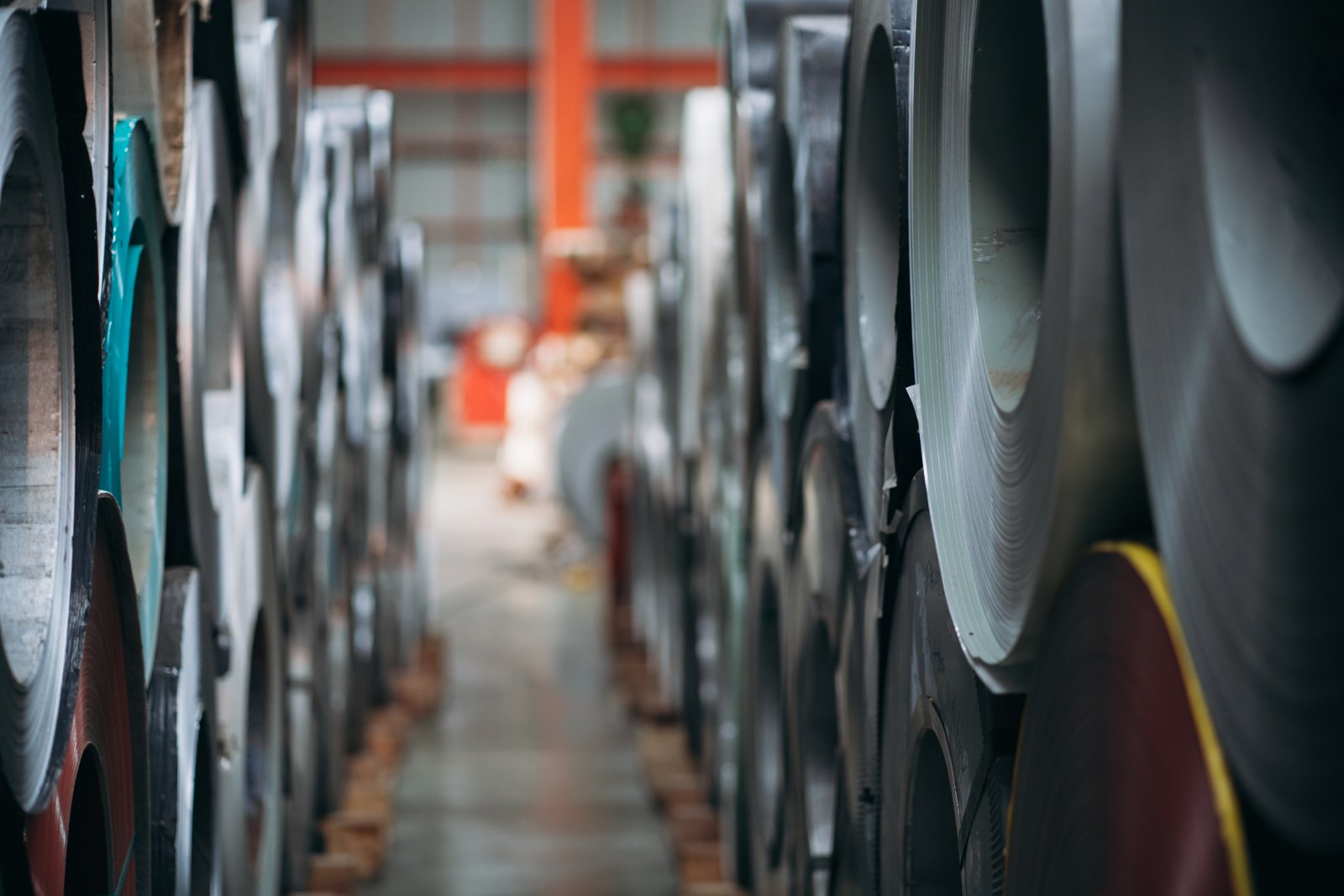
Структурированный подход к корректирующим действиям необходим для долгосрочной стабильности процесса. Он начинается с точной диагностики, за которой следует целенаправленное вмешательство в одну из трех ключевых областей: само печное оборудование, параметры процесса или операционные процедуры. Простого изменения температурного режима редко бывает достаточно. Долгосрочное решение часто включает в себя сочетание повторной калибровки, модернизации и переобучения. В компании AKS наша роль часто выходит за рамки поставки оборудования; мы выступаем в качестве партнеров по технологическому процессу, помогая нашим клиентам реализовать эти корректирующие действия, чтобы максимально повысить эффективность операций термообработки. Мы считаем, что хорошо обслуживаемая печь с оптимизированным процессом - это единственный способ гарантировать производство с нулевым количеством дефектов.
Оптимизация атмосферы и целостности печи
При возникновении поверхностных дефектов, таких как окисление или обезуглероживание, первым и наиболее важным корректирующим действием является проверка атмосферы печи и системы ее подачи. Это многоступенчатый процесс. Во-первых, необходимо провести тщательную проверку герметичности. Это можно сделать, подав давление в печную камеру и используя мыльный раствор или ультразвуковой течеискатель, чтобы найти любые нарушенные уплотнения, сварные швы или места соединений. Как обнаружил мой клиент, производящий полосы из углеродистой стали, первопричиной проблемы обезуглероживания стало изношенное уплотнение двери. Замена уплотнения - относительно недорогое решение - сразу же решила проблему, которая стоила им тысячи долларов забракованного материала.
Во-вторых, система защитного газа должна быть проверена. Для этого необходимо проверить чистоту поступающего газа и убедиться, что расход соответствует объему печи и обрабатываемому продукту. Для постоянного контроля атмосферы внутри печи следует использовать встроенный анализатор кислорода и точки росы. Если показания не соответствуют норме, это указывает либо на утечку, либо на проблемы с подачей газа. Для клиентов, использующих наши Вакуумные печи для отжига5Для исправления ситуации необходимо проверить всю вакуумную систему, от насосов до уплотнений, чтобы убедиться, что она способна достичь и удерживать требуемый уровень вакуума, поскольку даже микроскопическая утечка может поставить под угрозу сверхчистую среду, необходимую для обработки таких реакционноспособных металлов, как титан.
ли, состав атмосферы должен быть оптимизирован для конкретного материала. Это включает в себя регулировку соотношения газов (например, N2/H2) или, для углеродистых сталей, регулировку углеродного потенциала путем регулирования добавок углеводородов. Это не универсальная настройка. Для точной настройки рецепта необходимо соотнести данные из журналов процесса с результатами качества. Внедрение системы управления с замкнутым контуром, в которой датчики обеспечивают обратную связь в реальном времени с пультом управления газом, является окончательным корректирующим действием, позволяющим перейти от реактивных корректировок к проактивному, автоматизированному управлению процессом.
Усовершенствование термического цикла: Нагрев, замачивание и охлаждение
Для устранения таких размерных дефектов, как деформация и растрескивание, необходимо уточнить тепловой профиль. Это начинается с критического анализа скоростей нагрева и охлаждения. Если проблема заключается в искажении, скорость нагрева следует замедлить. Этого можно добиться, запрограммировав многоступенчатый темп нагрева с промежуточными паузами, чтобы температура выровнялась по всему сечению детали. Это особенно важно для деталей разной толщины. Мощным инструментом здесь может стать программное обеспечение для теплового моделирования, которое позволяет смоделировать тепловой поток и предсказать развитие напряжений, что поможет разработать оптимальный профиль нагрева еще до начала обработки детали.
Устранение проблем с растрескиванием почти всегда связано с изменением цикла охлаждения. Скорость охлаждения должна быть достаточно медленной, чтобы предотвратить образование хрупких микроструктур (например, мартенсита в стали) и минимизировать тепловой удар. Наш сайт Усовершенствованная система охлаждения6 обеспечивает необходимую гибкость. Для клиента, отжигающего сложные штампованные детали, корректирующим действием было программирование двухступенчатой последовательности охлаждения: первоначальное быстрое охлаждение от температуры отжига до температуры чуть выше критической температуры превращения, а затем гораздо более медленное охлаждение через диапазон превращения. Это позволило предотвратить образование трещин и при этом получить мелкозернистую микроструктуру.
Время выдержки и равномерность температуры также имеют ключевое значение. Если металлургические свойства не совпадают, возможно, время выдержки недостаточно для того, чтобы температура стала равномерной по всей загрузке. Корректирующие действия заключаются в увеличении времени выдержки или, что более эффективно, в улучшении способности печи к равномерному нагреву. Это может включать в себя модернизацию с помощью циркуляционных вентиляторов, как мы часто рекомендуем для старых печей Bogie Hearth Furnaces, или изменение способа загрузки деталей, чтобы обеспечить достаточное пространство для циркуляции атмосферы вокруг каждого компонента.
Совершенствование эксплуатационных процедур и технического обслуживания
Часто первопричиной дефектов является не печь или технологический рецепт, а человеческий фактор или плохое техническое обслуживание. Поэтому важнейший набор корректирующих действий связан со стандартизацией рабочих процедур и внедрением надежной программы профилактического обслуживания. Все начинается с загрузки деталей. Операторы должны быть обучены тому, как загружать печь, чтобы добиться максимальной однородности и предотвратить соприкосновение деталей или их экранирование друг другом. Для нашего Непрерывные яркие линии отжигаМы работаем с клиентами над оптимизацией плотности загрузки ленты, чтобы каждый квадратный дюйм ленты имел одинаковую температуру и атмосферу.
Разработка стандартных операционных процедур (СОП) имеет решающее значение. В этих документах должны быть четко определены все параметры процесса для каждого типа продукта: температура, темп, время выдержки, состав атмосферы и профили охлаждения. Это исключает догадки и обеспечивает согласованность действий разных смен и операторов. Контрольные списки для предпусковых проверок (например, проверка уплотнений дверей, проверка давления газа) должны быть обязательными. Такая процедурная дисциплина является основой любого надежного производственного процесса.
ли, строгий график профилактического обслуживания является лучшим корректирующим действием из всех, поскольку он предотвращает возникновение проблем в первую очередь. Это включает в себя регулярную калибровку термопар, проверку и замену уплотнений, очистку излучающих трубок или нагревательных элементов, а также обслуживание циркуляционных вентиляторов и вакуумных насосов. В таблице ниже приведен базовый контрольный список технического обслуживания, который является основой для предотвращения дефектов.
| Компонент | Задача по обслуживанию | Частота | Предотвращенный дефект |
|---|---|---|---|
| Термопары | Калибровка по сертифицированному стандарту | Ежеквартально | Непостоянная твердость, неравномерный размер зерна |
| Уплотнения дверей/крышек | Осмотрите на предмет износа/повреждений; замените при необходимости | Ежемесячно | Окисление, обезуглероживание |
| Анализатор атмосферы | Калибровка датчиков (O2, точка росы) | Ежемесячно | Окисление, обезуглероживание, противоречивые свойства |
| Циркуляционные вентиляторы | Осмотрите подшипники и крыльчатки на предмет износа | Ежегодно | Неравномерная температура, металлургические дефекты |
| Нагревательные элементы | Проверьте, нет ли сопротивления, провисания или повреждений. | Ежегодно | Горячие/холодные точки, неравномерность температуры |
Систематически занимаясь оборудованием, процессом и людьми, которые им управляют, производители могут выйти за рамки простого устранения дефектов и построить процесс, который по своей сути является стабильным, надежным и способным производить высококачественную продукцию каждый раз.
Утечки в печи вызывают обезуглероживаниеПравда
Утечки воздуха в печах отжига вводят кислород, который вступает в реакцию с углеродом в стали, вызывая дефекты обезуглероживания поверхности.
Более быстрое охлаждение всегда предотвращает растрескиваниеЛожь
Слишком быстрое охлаждение может привести к возникновению термических напряжений и хрупких микроструктур, которые повышают риск растрескивания.
Какие передовые методы помогут предотвратить распространенные дефекты отжига?
Зачем тратить время и деньги на исправление дефектов, если можно предотвратить их появление? Принятие упреждающего подхода и внедрение лучших отраслевых практик - это самый эффективный способ обеспечить безупречный отжиг, повысить выход продукции и увеличить рентабельность.
Лучшие методы предотвращения дефектов отжига включают установление точных параметров процесса для конкретного материала, внедрение жесткого графика профилактического обслуживания печи, обеспечение строгого контроля атмосферы с непрерывным мониторингом, а также всестороннее обучение операторов стандартным процедурам и правильной загрузке деталей.
За свою карьеру я заметил явную разницу между компаниями, которые постоянно борются с качеством, и теми, которые преуспевают. Разница не в везении, а в дисциплине. Лучшие предприятия не ждут, пока возникнет проблема. Они выстраивают систему профилактики. Я посетил поставщик автомобилей высшего класса7 в Европе, которые достигли уровня качества термообработки "Шесть сигм". Их секрет? Культура, построенная на лучших профилактических практиках. Операторы печей были не просто рабочими, а обученными техниками, которые понимали, почему каждый шаг стоит за этим. Они следовали подробным контрольным спискам, их техническое обслуживание было запланированным и тщательным, а данные процесса постоянно анализировались на предмет любых незначительных отклонений. Они относились к своим Печи для отжига типа Bell с такой же тщательностью, как и прецизионные станки. Такой проактивный подход является конечной целью, превращая процесс отжига из потенциального источника проблем в надежное и предсказуемое конкурентное преимущество.
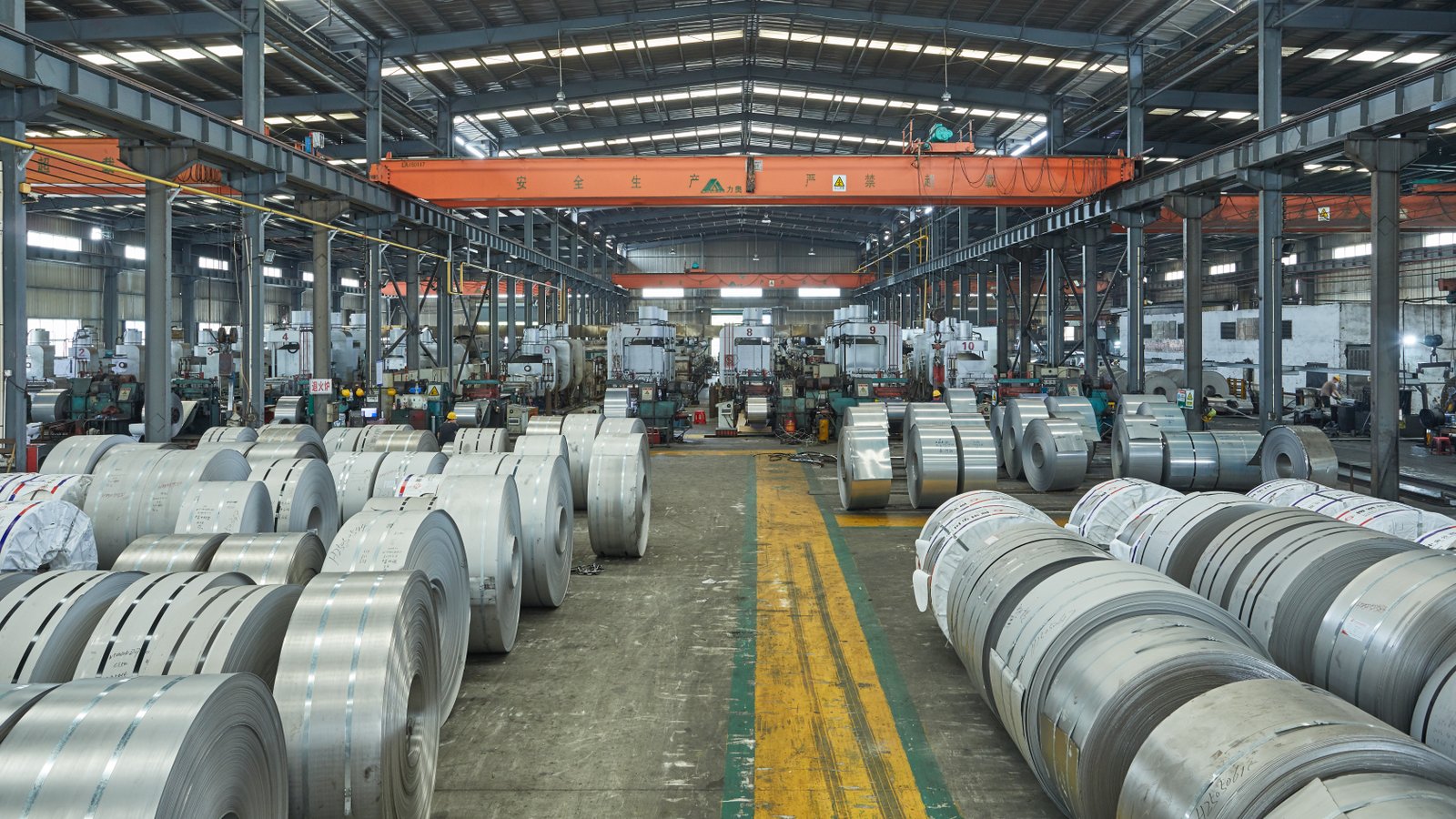
Предотвращение дефектов при отжиге - это не одно решение, а создание надежной производственной экосистемы вокруг процесса термообработки. Эта экосистема основана на четырех столпах: Управление процессом, Надежность оборудования, Мастерство оператора и Непрерывное совершенствование. Институционализировав лучшие практики в каждой из этих областей, производитель может создать устойчивую систему, которая минимизирует вероятность возникновения дефектов и способна производить продукцию неизменно высокого качества. В компании AKS мы проектируем наши печи так, чтобы они были надежным ядром этой экосистемы, обеспечивая точность и контроль, необходимые нашим клиентам для эффективного внедрения передовых практик и достижения результатов мирового класса. Это целостная философия, которая превращает искусство термообработки в предсказуемую науку.
Создание системы управления технологическими процессами на основе данных
Основа предотвращения дефектов - знать точный рецепт успеха и каждый раз выполнять его идеально. Это означает отказ от племенных знаний и создание системы управления процессом, основанной на данных. Первый шаг - проведение тщательного анализа режимов и последствий отказов в процессе (PFMEA) для выявления всех потенциальных режимов отказов и их причин. Для каждого продукта или сплава материалов необходимо создать конкретный, проверенный "рецепт" или стандартную операционную процедуру (SOP). В этом СОПе должны быть подробно описаны все критические параметры: скорость нагрева, температура и продолжительность выдержки, профили охлаждения, состав и расход атмосферы. Это не должны быть грубые рекомендации, это должны быть точные заданные значения с определенными диапазонами допусков.
Важнейшей передовой практикой является использование контрольных карт и Статистический контроль процессов (SPC)8. Такие ключевые параметры, как температура печи, точка росы в атмосфере и твердость конечного продукта, должны регулярно измеряться и наноситься на контрольные графики. Это позволяет своевременно выявлять любые отклонения в технологическом процессе, прежде чем они приведут к получению продукта, не отвечающего требованиям стандарта. Например, если средняя твердость начинает стремиться к верхнему контрольному пределу, это свидетельствует о необходимости корректировки, причем задолго до того, как детали будут отбракованы. Наши более совершенные системы управления печью могут автоматизировать регистрацию данных, что делает внедрение SPC беспроблемным.
Кроме того, очень важно увязать данные о процессе с результатами качества. Я работал с компанией "PrecisionCo Strips" над внедрением системы штрих-кодов, которая маркировала каждый рулон нержавеющей стали полными технологическими данными, полученными в ходе его обработки в нашем Печь для отжига. Когда клиент сообщал о незначительной проблеме, он мог мгновенно получить полную тепловую и атмосферную историю конкретной катушки и сравнить ее со своим стандартом "золотого прогона". Эта возможность неоценима для быстрого анализа первопричины и демонстрации контроля процесса требовательным клиентам, превращая обеспечение качества из реактивной в проактивную функцию.
Внедрение программы полного профилактического обслуживания (TPM)
Промышленная печь - это сложное оборудование, которое не будет работать надежно без регулярного и тщательного ухода. Лучшая практика, которая отличает лучших от остальных, - это внедрение программы полного профилактического обслуживания (TPM). Она выходит за рамки простого реактивного ремонта и направлена на проактивное поддержание печи в состоянии максимальной производительности. Она включает в себя плановые проверки, чистку, калибровку и замену расходных деталей, таких как уплотнения, термопары и фильтры. График TPM должен быть составлен на основе рекомендаций производителя (например, тех, которые мы предоставляем для всех печей AKS) и интенсивности использования.
Ключевым элементом TPM является регулярная калибровка всех критических датчиков, особенно термопар и анализаторов атмосферы. Неправильные показания термопары могут привести к тому, что весь процесс будет протекать при неправильной температуре, что гарантирует выпуск бракованной продукции. Ежеквартальная проверка калибровки по сертифицированной эталонной термопаре является обязательной передовой практикой. Аналогичным образом, некалиброванный датчик кислорода может создать ложное ощущение безопасности, в то время как на самом деле печь работает в загрязненной атмосфере.
Еще одна передовая практика - поддержание запаса необходимых запасных частей. Ожидание доставки запасного двигателя вентилятора или нового комплекта дверных уплотнителей может привести к многодневному дорогостоящему простою. Программа TPM включает в себя анализ частоты отказов компонентов, чтобы определить, какие запасные части следует хранить на месте. Это гарантирует, что в случае выхода из строя какого-либо компонента ремонт будет произведен быстро, что сведет к минимуму перебои в производстве. В таблице ниже приведен пример того, как задачи TPM напрямую предотвращают конкретные дорогостоящие дефекты.
| Задача TPM | Частота | Предотвращенный дефект | Сопутствующие затраты, которых удалось избежать |
|---|---|---|---|
| Калибровка термопары | Ежеквартально | Непостоянная твердость, перегрев | Обрезки, переработка, возвраты клиентов |
| Проверка дверного уплотнения | Ежемесячно | Окисление поверхности, обезуглероживание | Химическая очистка, полировка |
| Очистка лучевой трубки | Ежегодно | Горячие точки, неравномерность температуры | Искажение, неравномерный размер зерна, лом |
| Замена фильтра атмосферного газа | По расписанию | Загрязнения, дефекты поверхности | Отказ от высокоценного продукта |
| Замена масла вакуумного насоса | По расписанию | Плохой уровень вакуума, окисление | Лом реактивных/специальных металлов |
Повышение мастерства операторов и дисциплинированности
Самая современная печь в мире все равно может производить брак при неправильной эксплуатации. Поэтому краеугольным камнем профилактики дефектов является инвестирование в персонал цеха. Обучение операторов должно быть комплексным и непрерывным. Оно должно охватывать не только "как" (какие кнопки нажимать), но и "почему" (металлургические принципы, лежащие в основе процесса). Когда операторы понимают почему Если поддержание низкой точки росы имеет решающее значение, они, скорее всего, будут старательно проверять наличие утечек и сообщать об аномалиях.
Стандартизация - ключ к устранению вариабельности. Каждая задача, от загрузки печи до ввода рецепта процесса, должна регулироваться четким, наглядным и легкодоступным СОПом. Использование контрольных списков для процедур запуска и остановки - это простая, но невероятно эффективная передовая практика, позволяющая не упустить ни одного критически важного шага. В компании AKS мы часто помогаем создавать визуальные СОПы для наших клиентов, используя изображения и четкие инструкции, чтобы сделать их максимально удобными для пользователя.
Еще одним действенным методом является наделение операторов полномочиями быть первой линией обороны в контроле качества. Они должны быть обучены распознавать первые признаки проблемы - необычный шум вентилятора, медленно повышающаяся точка росы, небольшое изменение цвета детали - и иметь право обратить внимание на проблему или даже остановить линию, если это необходимо. Это создает культуру ответственности и проактивного управления качеством. Отличный пример - клиент, внедривший простую систему "красных меток". Любой оператор, заподозривший неладное, мог поместить красную метку на панель управления, что немедленно вызывало проверку инженера-технолога. Эта простая система позволила предотвратить многочисленные потенциальные утечки качества.
Профилактическое обслуживание предотвращает дефекты отжигаПравда
Регулярная калибровка и обслуживание компонентов печи, таких как термопары и уплотнения, напрямую предотвращают такие распространенные дефекты, как неравномерная твердость и окисление поверхности.
Обучение операторов охватывает только нажатие кнопокЛожь
Эффективное обучение операторов включает в себя понимание металлургических принципов, лежащих в основе процессов, а не только механических операций, что способствует проактивному контролю качества.
Заключение
В конечном итоге достижение бездефектного процесса отжига зависит от дисциплинированного, проактивного подхода. Сочетание точного управления печью, оптимизации процесса на основе данных и тщательного технического обслуживания позволит вам превратить операции термообработки из источника проблем в краеугольный камень качества и прибыльности.
-
Узнайте о типичных дефектах отжига и о том, как они влияют на свойства материала. ↩
-
Изучение влияния дефекта обезуглероживания на усталостную прочность изделий ↩
-
Узнайте, как печи для отжига ярких продуктов повышают качество продукции и ее товарный вид ↩
-
Понять принципы работы печей с сетчатой лентой ↩
-
Узнайте о применении вакуумных печей для сверхчистой обработки ↩
-
Изучите передовые технологии охлаждения для оптимальных тепловых профилей ↩
-
Ознакомьтесь с передовыми отраслевыми практиками, обеспечивающими высочайшее качество производственных процессов. ↩
-
Понять роль SPC в раннем выявлении дефектов и обеспечении качества в производстве. ↩


